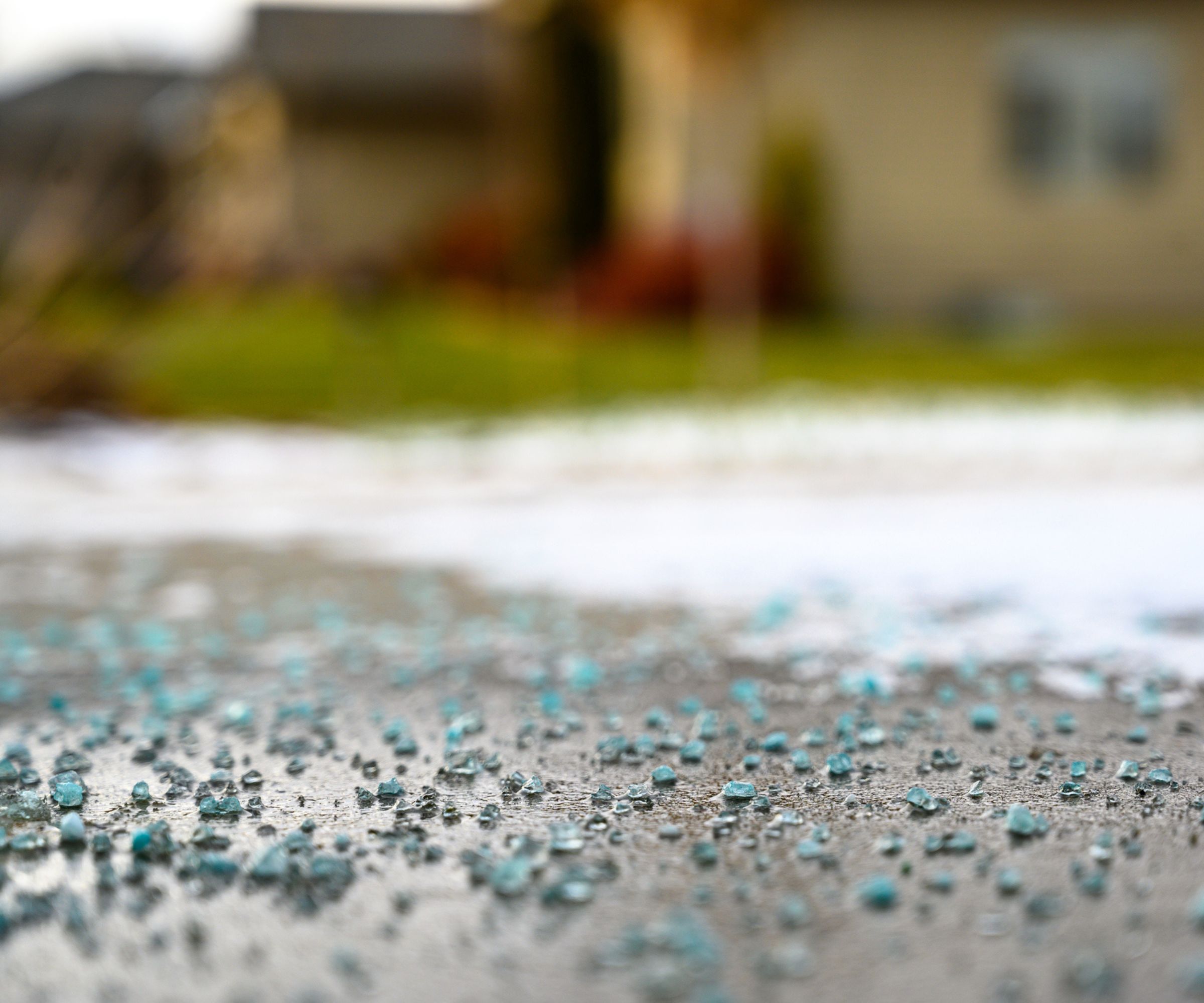
Ice melt is a winter essential in many parts of the country. It makes icy paths and driveways much less hazardous, ensuring your life can run smoothly even during heavy snow and deep freezes.
But ice melt products are covered in complicated jargon, and they are all potentially hazardous to pets. If you don't know what you're doing you can end up with not only the wrong product, but one that could harm your furry friends.
I spoke to a de-icing special about the best ways to keep a driveway frost-free, and heard from a veterinarian about the best ways to make de-icing safe for dogs. The good news is that it's simple to apply ice melt and keep essential surfaces safe.
What is ice melt?

'Ice melt' refers to any chemical product that prevents ice from forming. It is usually calcium chloride, magnesium chloride, or potassium chloride, or a combination of all of them. These chemicals lower water's freezing point, so ice can't form even at freezing temperatures.
Ice melt is usually preferred over rock salt. Rock salt loses its effectiveness at 15°F, but ice melt can work at temperatures as low as -25°F. On top of that, ice melt is is safer for concrete, cars, and decks. Rock salt can easily damage all of these surfaces. It combines with water to lower its freezing point, this rock-salt brine expands much more than water if it ever gets cold enough.
If rock-salt brine seeps into tiny cracks of concrete during a cold night and freezes, the expanding water will crack your drive. It can also scratch decks and dry out and crack the wood. On roads, rock salt can cause cars to rust. While ice melt can still cause damage, it is much safer.
The type of ice melt you buy doesn't particularly matter unless you live somewhere especially cold. If you regularly see temperatures below 20°F, you need to use calcium chloride ice melt, but this is the most common type of ice melt, so it's likely the one you'll buy anyway. Ice melt is easy to find at Walmart or hardware stores.
How much ice melt do I need per square foot?
Calculating your ice melt needs is pretty easy, but there are a few things to bear in mind. Ice melt expert Angelika Zaber says 'As a very general guideline, you should typically use around 2 to 4 ounces of ice melt per square yard.'
However, it depends on the ice melt and local conditions. Angelika explains 'While most ice melts are made from calcium chloride, different products may vary in concentration, such as 77% or 97% calcium chloride, which affects how much product you need to use. Due to this, it is best to check the manufacturer’s guidelines for your specific ice melt.'
She adds that 'Additionally, weather conditions also affect how much product you need to use. For example, if the forecast only predicts ice, you can use less product than when dealing with both snow and ice.'
How do you apply ice melt to driveways?

There are two main ways to apply ice melt to a drive, and it depends on whether or not you're apply salt before or after snow.
Angelika explains 'For pre-treatment, simply spread a thin layer of ice melt directly onto the surface you want to protect from ice. However, if snow and ice have already formed, be sure to clear away the snow first. This allows the ice melt to make direct contact with the pavement, ensuring better results.'
Application is easy. Angelika says 'You can either use a scoop or your hands (wearing gloves for safety) when treating small areas. For larger areas, a salt spreader is more efficient.' Push salt spreaders are easy to find on Amazon, but for most small-to-midsize homes it's much more cost effective have a cheap bottle spreader like this from Amazon. It does a similar job but costs much less.
Finally, she says 'Make sure the entire area is evenly covered for the best effect – you may want to consider buying a product that contains colored dye, making it easier to see which areas have already been treated.' There are a wide varied of colored ice melts out there, such as this made-in-America pet-safe blue ice melt at Amazon.
This process is exactly the same for pathways and decks, no matter the type of stone on your paving. The only difference is with decks. With decks, once the ice has melted, remove any excess surface water with a rubber push broom like this from Walmart. This will help prevent rot on your deck.
How to stay pet-safe when using ice melt

The biggest issue with ice melt is that it isn't safe for pets. Veterinarian Dr Amanda Chambers warns that 'Most ice-melts or rock-salts are not safe for pets. They can cause irritation when they contact the skin, especially for an extended period and can cause gastrointestinal upset if ingested, even just from licking of the paws after contact.'
Moreover, some ice melts labelled 'pet-safe' aren't pet safe at all. Dr Chambers says 'Many of the products labelled “pet-safe” contain magnesium chloride which may be less irritating to the skin and therefore safer for pets but are still just as likely to cause gastrointestinal upset, so are not completely without risk to your pet.'
This means that buying pet-safe ice melt is only the start. There is a lot of other steps to make sure your ice melt is pet-safe. Dr Chambers says 'A pet-safe label is important for pet owners, but the best thing they can do is take precautions to avoid exposure in general. This may include storing ice-melt out of reach to avoid inadvertent ingestion, having your dog wear booties in the winter or wiping down your dog’s paws after outdoor adventures with potential exposure to ice-melt. If your dog ingests ice-melt or rock-salt, it is best to promptly contact your veterinarian for further recommendations.'
Ice melt isn't the only way to de-ice paths and patios in the winter. Though rock salt has its drawbacks, it can be an inexpensive solution. It's also worth learning how to winterize a deck or driveway before the ice sets in to minimize and problems before they start.







